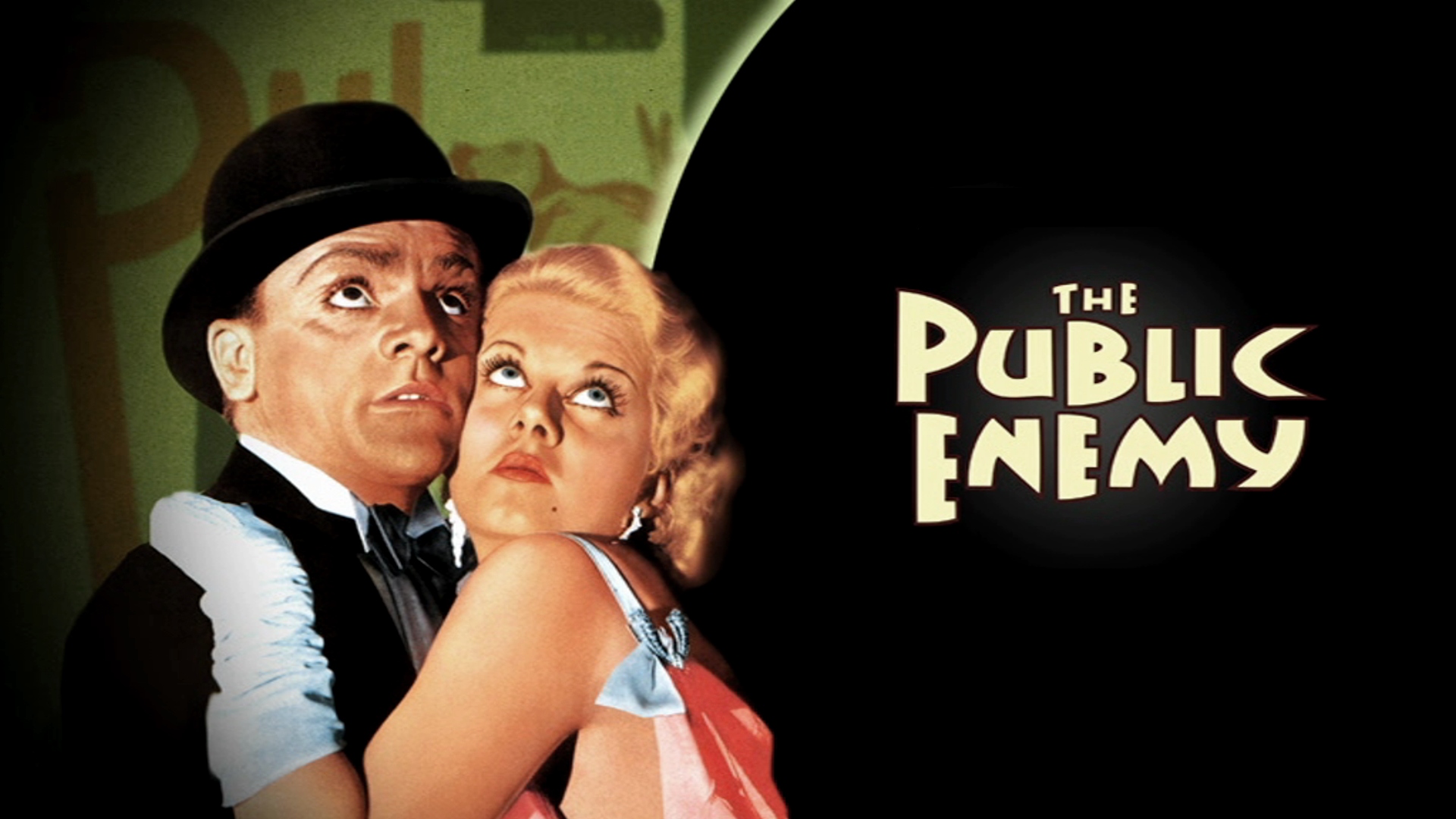
The Public Enemy, directed by William A. Wellman, is a classic American crime film that has captivated audiences since its release in 1931. Set during the Prohibition era, the movie follows the rise and fall of Tom Powers, played by James Cagney, as he navigates the treacherous world of organized crime in Chicago.
Filled with gritty realism, powerful performances, and memorable scenes, The Public Enemy remains a timeless cinematic masterpiece. In this article, we will take a deep dive into the fascinating world of this iconic film, exploring 44 intriguing facts that will enhance your appreciation for this cinematic gem.
Key Takeaways:
- The Public Enemy” is a classic gangster film set during the Prohibition era, known for its gritty realism and iconic scenes like the grapefruit incident. It continues to captivate audiences and remains a cultural touchstone.
- The movie’s portrayal of violence and its impact on future films, along with its exploration of societal dynamics, makes “The Public Enemy” a timeless classic and an essential part of film history.
Origin of the Title
The movie “The Public Enemy” gets its title from a book called “Public Enemy Number One” by John Hamilton. The book chronicles the true stories of notorious criminals during the Prohibition era.
Release Date
“The Public Enemy” was released on April 23, 1931, in the United States.
Prohibition Era Setting
The movie is set during the Prohibition era in America, when the production, sale, and distribution of alcohol were prohibited.
Directed by
The Public Enemy” was directed by William A. Wellman, known for his realistic and gritty style of filmmaking.
Main Characters
The movie stars James Cagney as Tom Powers and Jean Harlow as Kitty, with Edward Woods as Matt Doyle.
Tom Powers’ Iconic Line
One of the most famous lines from the movie is when Tom Powers (James Cagney) says, “I ain’t so tough.” This line has become synonymous with Cagney’s tough guy persona.
Censorship Controversy
The Public Enemy” faced controversy and censorship due to its explicit violence and depiction of criminal activities.
Tom Powers’ Famous Grapefruit Scene
In one memorable scene, Tom Powers shoves a grapefruit into his girlfriend’s face. This scene has become an iconic moment in film history.
Real-Life Gangsters
The character of Tom Powers was inspired by real-life gangsters such as Al Capone and John Dillinger.
Critical Acclaim
The Public Enemy” received critical acclaim for its realistic portrayal of the gangster lifestyle and Cagney’s powerful performance.
Box Office Success
The movie was a commercial success, earning over $1.2 million at the box office.
Academy Award Nominations
Although it did not win any Academy Awards, “The Public Enemy” was nominated for Best Writing and Best Sound Recording.
Longevity
“The Public Enemy” has endured as a classic film and is considered one of the greatest gangster movies of all time.
Impact on Future Films
The movie influenced future gangster films and helped establish the genre’s tropes and conventions.
Notable Soundtrack
The film features a memorable musical score composed by David Mendoza and Leo F. Forbstein.
Pre-Code Era
The Public Enemy” falls within the Pre-Code era of Hollywood filmmaking, known for its daring and provocative content.
Historical Context
The movie reflects the social and economic struggles of the Great Depression era, capturing the desperation and allure of a life of crime.
Signature Dance Scene
The film includes a lively dance sequence at a speakeasy, showcasing the vibrant atmosphere of the underground nightlife during Prohibition.
Realistic Violence
“The Public Enemy” shocked audiences with its graphic and realistic depiction of violence, setting a new standard for the portrayal of crime in film.
Cagney’s Breakout Role
James Cagney’s performance in “The Public Enemy” catapulted him to stardom and established him as one of Hollywood’s most iconic tough guys.
Societal Commentary
The movie offers a commentary on the corruption of the American dream and the allure of wealth and power.
The Production Code
“The Public Enemy” played a significant role in the development of the Production Code, which aimed to regulate and censor content in Hollywood films.
Legacy of Violence
The film’s portrayal of violence and its consequences left a lasting impact on subsequent crime dramas, influencing future filmmakers and storytellers.
Cultural Impact
“The Public Enemy” became a cultural phenomenon, inspiring fashion trends and influencing popular culture, even to this day.
Historical Accuracy
The movie showcases the Prohibition era with attention to detail, accurately capturing the fashion, music, and ambiance of the time.
Supporting Cast
In addition to the main cast, “The Public Enemy” features talented actors such as Joan Blondell and Donald Cook in supporting roles.
Notable Quotes
The movie is filled with memorable quotes, showcasing the fast-paced and sharp dialogue of the era.
Remake and Adaptations
“The Public Enemy” has been remade and adapted several times in various mediums, further solidifying its cultural significance.
Influence on Gangster Genre
The film’s success contributed to the popularity and development of the gangster genre in Hollywood.
Realism in Filmmaking
The Public Enemy” is lauded for its realism, depicting the harsh realities of the criminal underworld with authenticity.
Portrayal of Women
The movie explores the role of women in the gangster lifestyle, showing their struggles and limited agency within a male-dominated world.
Cinematic Techniques
“The Public Enemy” introduced innovative cinematic techniques, such as dynamic camera movements and dramatic lighting, influencing future filmmakers.
Critical Analysis
The film has been extensively analyzed by film scholars and critics, examining its themes, motifs, and cultural impact.
Preservation by the Library of Congress
“The Public Enemy” was selected for preservation in the United States National Film Registry by the Library of Congress, recognizing its cultural significance.
The Public Enemy Merchandise
The movie’s popularity led to the production of various merchandise, including posters, t-shirts, and collectible items.
Public Reception
Upon its release, “The Public Enemy” received mixed reviews from the public, with some condemning its violence and others praising its authenticity.
International Success
The movie was not only a success in the United States but also gained international recognition and popularity.
Themes of Loyalty and Betrayal
“The Public Enemy” explores complex themes of loyalty, betrayal, and the consequences of one’s actions.
Historical Artifacts
Props and costumes from “The Public Enemy” are considered valuable historical artifacts and are housed in museums and private collections.
Banned in Some Countries
Due to its explicit content, “The Public Enemy” was banned in certain countries, further fueling its notoriety.
Hollywood’s Golden Age
The film is a testament to Hollywood’s golden age, capturing the essence of the era’s filmmaking and storytelling.
Historical Accuracy vs. Fictionalized Narrative
While “The Public Enemy” draws inspiration from real-life events and figures, it also takes creative liberties to tell a compelling story.
Enduring Popularity
Despite being released almost a century ago, “The Public Enemy” continues to captivate audiences and remains an essential part of film history.
The Public Enemy’s Cultural Significance
“The Public Enemy” is not only a classic gangster film but also a cultural touchstone that allows us to explore and understand the societal dynamics of the time.
“The Public Enemy” is an iconic film that encapsulates the raw energy and allure of the Prohibition era. Directed by William A. Wellman and starring James Cagney, the movie delves into the dark underbelly of the criminal underworld with a gritty realism that shocked audiences of the time. The film follows the story of Tom Powers, a charismatic and ruthless gangster who rises through the ranks of organized crime. With its explicit violence, sharp dialogue, and powerful performances, “The Public Enemy” became a defining film of the gangster genre and left a lasting impact on the history of cinema. Its portrayal of the Prohibition era, along with its exploration of themes such as loyalty, betrayal, and the corruption of the American dream, provides a compelling and thought-provoking viewing experience. Over the years, the movie has garnered critical acclaim and continues to be praised for its realistic depiction of the criminal lifestyle. “The Public Enemy” stands as a timeless classic, forever etched in the annals of cinema history.
Conclusion
Overall, The Public Enemy is a classic movie that has stood the test of time. With powerful performances, a gripping story, and memorable moments, it has cemented its place in cinema history. The film’s portrayal of organized crime during the Prohibition era continues to captivate audiences, showcasing the dark side of society and the consequences of a life of crime. From its iconic scenes to its social commentary, The Public Enemy remains a must-watch for movie enthusiasts and fans of the gangster genre. Whether you’re a fan of classic movies or simply looking for a film that offers a slice of cinematic history, The Public Enemy is definitely worth adding to your watchlist.
FAQs
1. Who directed The Public Enemy?
The Public Enemy was directed by William A. Wellman.
2. When was The Public Enemy released?
The Public Enemy was released on April 23, 1931.
3. Who are the main actors in The Public Enemy?
The film stars James Cagney as Tom Powers, Jean Harlow as Gwen Allen, and Edward Woods as Matt Doyle.
4. Is The Public Enemy based on a true story?
While The Public Enemy is not based on a specific true story, it was inspired by real-life events and the gangster culture of the Prohibition era.
5. What is the significance of The Public Enemy in film history?
The Public Enemy is considered a groundbreaking film in the gangster genre, setting the standard for future movies in this category. It helped establish James Cagney as a Hollywood star and showcased his dynamic acting abilities.
6. Is The Public Enemy a violent movie?
Yes, The Public Enemy is known for its depiction of violence and the brutal nature of organized crime during that time period.
7. Does The Public Enemy have any notable scenes?
One of the most memorable scenes in The Public Enemy is the grapefruit scene, where James Cagney’s character smashes a grapefruit into Mae Clarke’s face.
8. Has The Public Enemy received any awards or recognition?
While The Public Enemy wasn’t nominated for any Academy Awards, it has become a highly regarded film in cinematic history and has been included in numerous “best of” lists.
If you're fascinated by the Prohibition Era and its impact on cinema, explore our article on "The Untouchables" for more insights. For a deeper dive into the life and career of the iconic James Cagney, check out our piece highlighting surprising facts about this legendary actor. And if classic films are your passion, don't miss our extensive look at "Butterfield 8," a timeless masterpiece that continues to captivate audiences.
Was this page helpful?
Our commitment to delivering trustworthy and engaging content is at the heart of what we do. Each fact on our site is contributed by real users like you, bringing a wealth of diverse insights and information. To ensure the highest standards of accuracy and reliability, our dedicated editors meticulously review each submission. This process guarantees that the facts we share are not only fascinating but also credible. Trust in our commitment to quality and authenticity as you explore and learn with us.


